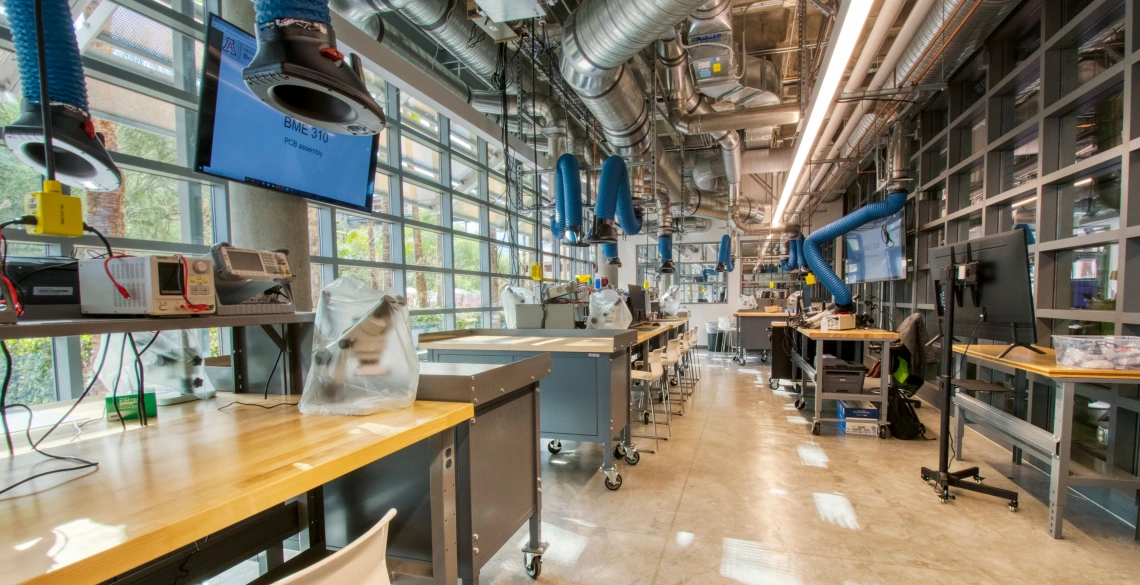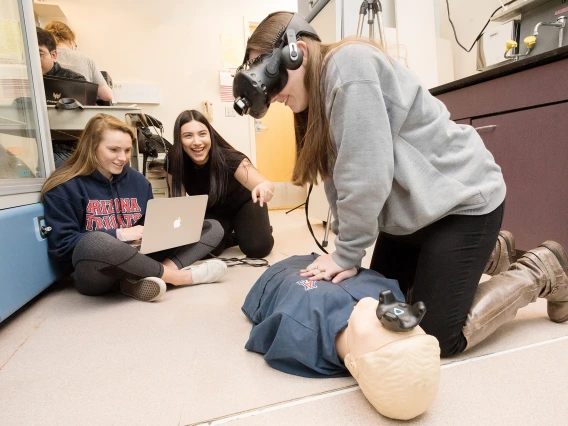Engineers Gain Hands-On Experience in New Medical Device Design Lab
The Peter and Nancy Salter Medical Device Design Lab provides engineering students with a space to design, build and experiment unlike anywhere else on campus.

The Peter and Nancy Salter Medical Device Design Lab is the newest addition to the College of Engineering's facilities. (Photo: Sebastian Kleihs / University of Arizona Foundation)
The University of Arizona College of Engineering opened the Peter and Nancy Salter Medical Device Design Lab this semester. The lab houses a unique combination of equipment rarely seen in a teaching lab setting.
The Department of Biomedical Engineering is the lead for the new space. Associate professor Urs Utzinger and assistant professor Philipp Gutruf developed the space and an associated course for students majoring in biomedical engineering and other engineering fields that enables the students to design and create medical devices.
“There is no other space like this anywhere on campus,” Gutruf said. “Students have access to equipment only found in top research labs of electrical engineering, mechanical engineering, chemical engineering and the biosciences -- and it’s all in one space.”
The facility features research-grade equipment that students are using to design and construct medical devices which require the interplay of many disciplines. Think epifluidic devices -- soft patches that attach to the body to capture and analyze sweat for clues about how the body is functioning -- or wireless sensors that record minute changes in posture, heartbeat irregularities and the oxygenation of your blood. Students can fabricate their own printed circuit boards, build custom enclosures for wearable devices, perform sophisticated image analysis using specialized computers, and conduct chemistry and biology experiments. Equipment includes a laser cutter, a water jet, a 3D printer of various technologies and a full set of electrical analysis tools. Infrastructure such as a biosafety and chemistry hood allows students to handle research-grade cells and chemicals.
Construction of the space, and the development of the corresponding course, was made possible by a $1.5 million gift from University of Arizona alumnus Peter Salter, and his wife, Nancy Salter. It represents an integral part of the college’s Craig M. Berge Engineering Design Program, which immerses students in hands-on design projects throughout all four years of their undergraduate experience. Forming the medical device design course has created what will be the first of many four-year design sequences in the college.


